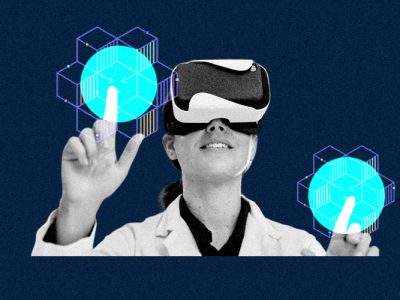
Blockchain technology may be able to improve trust, cooperation, traceability and auditability across the medical device industry’s value chain.
In healthcare, blockchain has a wide range of applications and functions. The ledger technology helps healthcare researchers uncover genetic code by facilitating the safe transfer of patient medical records, managing the drug supply chain, and facilitating the secure transfer of patient medical records.Regulatory authorities, who would gain from requiring the incorporation of blockchain technology to simplify medical device approvals and post-market surveillance, are likely to push blockchain adoption by medical device makers. During clinical trials, blockchain will make it possible to acquire and evaluate patient data and medical device performance data more swiftly. The device might also aid in the prevention of clinical trial data tampering or fabrication.
According to GlobalData, the healthcare business spends around 6% of total worldwide blockchain technology spending. As technology becomes more integrated, the healthcare industry’s market share is expected to grow during the next 10 years. The use of blockchain in electronic medical records (EMR) and its integration into numerous aspects of the medical device business will drive this. Because it provides enhanced security for data storage and data transfer of patients’ confidential medical data, the technology represents a huge potential for EMRs. It can also help to reduce the chances of patient record mistakes.
Patients will have more control over their medical records thanks to blockchain, which may also be used to transmit real-time data from wearables and medical equipment with doctors. The technology’s incorporation into medical equipment has received less attention, but experts predict it will play a key role in supply chain management. The technology’s secure network might be used to track medical items correctly from production through installation during patient operations.
In the medical device sector, blockchain and distributed ledger technologies may be able to increase trust, cooperation, traceability and auditability across the value chain. It has a number of advantages in the following areas:
Product Development
Documentation supporting the development of medical devices might be a mix of paper and different electronic information. The Device Master Record (DMR) and Design History File (DHF), for example, contain a variety of documents, including requirements, design plans, risk management, design testing, and validation of the design. As these documents shift from paper to electronic format, blockchain technology with built-in traceability and electronic signature capabilities can assist handle them safely. Clinical trial data management, one of the most difficult difficulties in product development, may be addressed via blockchain. For example, clinical trial data
Data Security
There were roughly 176 million data breaches affecting healthcare records between 2009 and 2017. The safe qualities of the blockchain can considerably improve the security of health data. Each individual has a public identifier or key as well as a private key that can only be used when and for the amount of time specified. In addition, requiring hackers to target each user individually in order to obtain sensitive information would limit hacking. As a result, blockchains can supply medical data with an immutable audit trail.
Commercial
Many medical device companies’ business strategies need the bundling of consumables and equipment use. These consumables may be sold using a sliding volume-based price reduction scale, which can be difficult to track accurately. Consumables may be susceptible to chargebacks or refunds based on special agreements with Group Purchasing Organizations (GPOs) or big healthcare providers. Smart contracts might be used with blockchain technology to help automate, clear, and settle these transactions throughout the medical device value chain involving manufacturers, suppliers, distributors, and other intermediaries.
Preventive Measures of Medical Equipment
Through blockchain applications, machines may exchange their operating data with individuals in charge of controlling it without jeopardising enforcement and privacy issues. Sensitive information, such as patients who have been treated with the unit, types of treatments, and images or other data, can be shared with the maintainers, but only for auditing, monitoring, and compliance. Blockchain may also retain service records that are required, depending on the system and its role.
Mobile Health Apps and Remote Monitoring
Mobile health applications are becoming increasingly important as technology advances. Electronic medical records (EMRs) were revealed to be kept safe on a blockchain network, with the data being able to be swiftly shared to medical staff and utilised for self-monitoring and home care. Malware, particularly root vulnerabilities that allow a hacker to get the patient’s private key, is particularly vulnerable in this area.
Regulatory authorities, who would gain from requiring the incorporation of blockchain technology to simplify medical device approvals and post-market surveillance, are likely to push blockchain adoption by medical device makers. During clinical trials, blockchain will make it possible to acquire and evaluate patient data and medical device performance data more swiftly. The device might also aid in the prevention of clinical trial data tampering or fabrication.



















